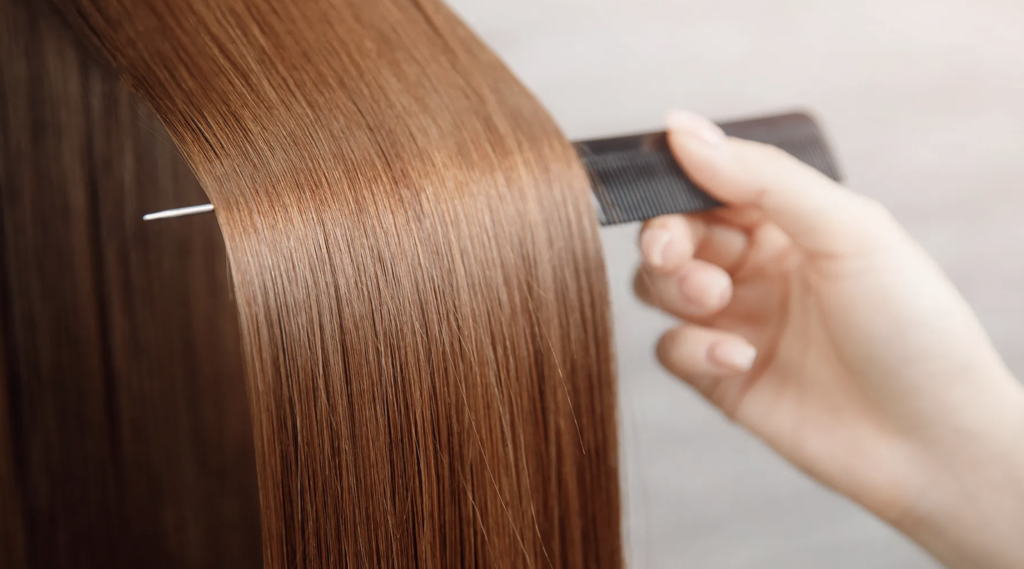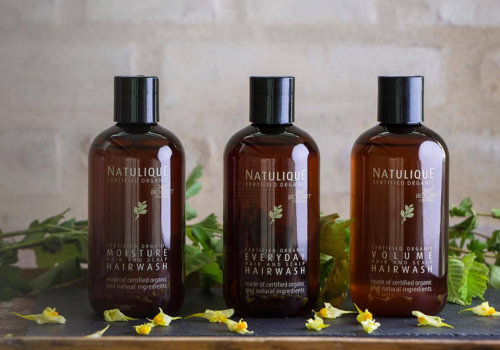Introduction
Colored hair is an expression of our individuality and personal style. Whether you opt for subtle hues or bold shades, keeping your hair color bright and vibrant is essential to prolonging the durability of your coloring. However, this requires proper care, and choosing the right shampoo is crucial to preserving the color and health of your colored hair.
Defining color-treated hair
Color-treated hair refers to hair that has undergone a coloring process, whether to cover gray hair, change color or add highlights and shades. This process involves the use of chemicals that alter the hair's natural structure, making it more susceptible to damage and fading.
The importance of choosing the right shampoo
Choosing the right shampoo for color-treated hair is crucial for several reasons. Firstly, shampoos specially formulated for color-treated hair are designed to preserve color by minimizing fading. They contain mild ingredients that gently cleanse without removing hair color pigments.
What's more, these shampoos are often enriched with moisturizing and nourishing ingredients that help restore hair's health and vitality. Coloring can make hair dry and brittle, and a moisturizing shampoo can help restore moisture and prevent damage.
In addition, shampoos for color-treated hair are generally free from harsh sulfates and other aggressive chemicals that can accelerate color fading. They are also formulated to maintain hair pH, which is essential to prevent color loss and maintain the integrity of color-treated hair.
Types of color-treated hair
A. Naturally colored hair
Some individuals are fortunate enough to be born with naturally colored hair, meaning that they exhibit nuances and variations in color without the use of chemical dyes. These nuances can be the result of genetic factors, sun exposure or other environmental influences. For example, hair may be naturally lighter in sunlight, or have reddish or golden highlights.
Naturally colored hair also requires special care to preserve its color and shine. Even if the hair has not been chemically colored, it may still be subject to fading due to UV rays, pollution or other environmental factors. For this reason, we recommend using a shampoo specially formulated for color-treated hair to prolong color durability and prevent fading.
B. Chemically colored hair
On the other hand, many people choose to color their hair using chemicals to achieve the desired color. This can involve permanent, semi-permanent coloring, highlights, balayage or other coloring techniques. Chemically colored hair is generally more susceptible to damage and fading, as the coloring process can alter hair structure and make it more porous.
It's essential to use products specifically designed for chemically colored hair to minimize damage and prolong color durability. These shampoos often contain gentle ingredients that deep-clean without removing color pigments, as well as moisturizing agents and UV protectors to prevent fading.
Ingredients to look for in shampoo for color-treated hair
A. Moisturizing agents
Moisturizing agents are essential in a shampoo for color-treated hair, as coloring can leave hair dry and dehydrated. Ingredients such as glycerine, argan oil, coconut oil or shea butter help retain moisture in the hair, leaving it soft, supple and less prone to damage.
B. No aggressive sulfates
Sulfates are foaming agents found in many shampoos, but they can be too aggressive for color-treated hair. Sulfates strip hair of its natural oils, which can lead to premature discoloration and drier, more brittle hair. Looking for a sulfate-free shampoo, or one containing mild sulfates such as sodium lauroyl sarcosinate, guarantees gentle cleansing without compromising color.
C. Presence of proteins
Proteins are important for strengthening hair structure and repairing damage caused by coloring. Ingredients such as keratin, silk protein and collagen help restore hair's strength and elasticity, reducing breakage and split ends. Proteins also help preserve color by filling cracks in the hair cuticle, preventing color pigments from escaping.
D. Vitamins and antioxidants
Vitamins and antioxidants are essential for maintaining the health of color-treated hair and protecting color from environmental damage. Vitamin E, for example, acts as a powerful antioxidant that protects hair against free radicals, while vitamin B5 (panthenol) helps strengthen hair and prevent damage. Looking for ingredients like green tea extract, grape seed extract or jojoba oil that are rich in vitamins and antioxidants can help maintain vibrant color and healthy hair.

Ingredients to avoid in shampoo for color-treated hair
A. Aggressive sulfates
Harsh sulfates, such as sodium lauryl sulfate (SLS) and sodium laureth sulfate (SLES), are cleansing agents commonly used in many shampoos. However, these sulfates can be too strong for color-treated hair, as they remove the hair's natural oils, which can lead to premature color fading. Sulfates can also cause dryness and irritation of the scalp, making hair more prone to damage.
B. Parabens
Parabens are chemical preservatives used in many personal care products, including shampoos. Although effective in extending product shelf life, parabens are controversial due to their potential for hormone disruption and adverse health effects. For people with color-treated hair, avoiding parabens is important to minimize exposure to potentially harmful chemicals that could compromise hair health and color durability.
C. Silicone
Silicones are ingredients commonly used in shampoos and conditioners to give hair a smooth, shiny appearance. However, silicones can also pose problems for color-treated hair. While they can temporarily improve hair's appearance by coating it with a protective film, silicones can also prevent other beneficial ingredients from reaching the hair, which can lead to product build-up and loss of volume. What's more, silicones can make hair color dull and lifeless over time by preventing color pigments from penetrating the hair effectively.

The different types of shampoo for colored hair
A. Moisturizing shampoos
Visit moisturizing shampoos are designed to meet the needs of color-treated hair, which tends to be dry and dehydrated. These shampoos contain moisturizing agents such as glycerine, argan oil or shea butter, which help retain moisture in the hair, making it softer and more supple. Moisturizing shampoos are ideal for people whose color-treated hair needs extra moisture to restore shine and vitality.
B. Sulfate-free shampoos
Visit sulfate-free shampoos are formulated without harsh cleansing agents such as sodium lauryl sulfate (SLS) and sodium laureth sulfate (SLES), which can discolor hair color and cause dry scalp. These shampoos gently cleanse without compromising color, offering a gentle alternative for people concerned about preserving their color while avoiding harsh chemicals.
C. Specific shampoos for certain colors
Some shampoos are specifically formulated to meet the needs of hair colored in certain shades or nuances. For example, there are shampoos designed for blond hair that help neutralize unwanted copper tones and maintain the luminosity of blond hair. Similarly, there are shampoos for red, brown or black color-treated hair, each formulated to preserve the color and shine specific to those shades. These shampoos often contain special pigments that help revive and intensify color, while providing the care needed for healthy hair.
Conclusion
In conclusion, caring for color-treated hair requires a specific and attentive approach. Choosing the right shampoo is essential to preserving hair color, health and beauty. By understanding the unique needs of color-treated hair and opting for products formulated specifically for color-treated hair, you can prolong the durability of your color while maintaining healthy, radiant hair.
It is important to look for shampoos containing moisturizing ingredients to prevent dryness, proteins to strengthen hair, vitamins and antioxidants to protect color from environmental damage, while avoiding harmful ingredients such as harsh sulfates, parabens and silicones.
By following these tips and making informed hair care choices, you can maintain vibrant, healthy and beautiful color-treated hair, allowing you to fully enjoy your style and individual expression.





